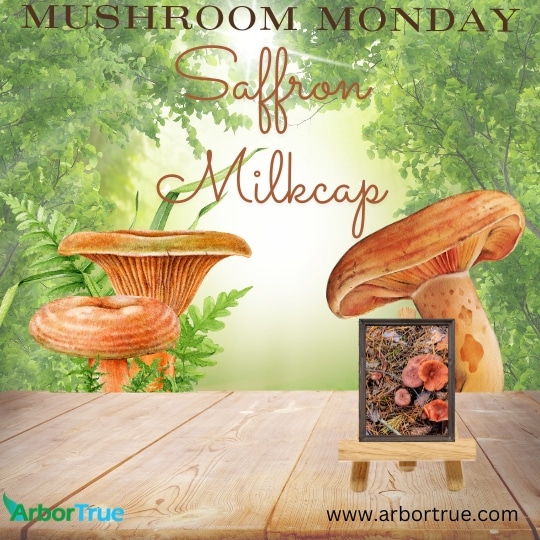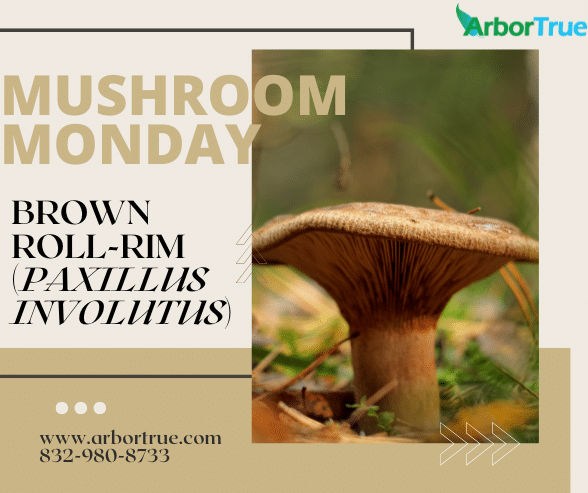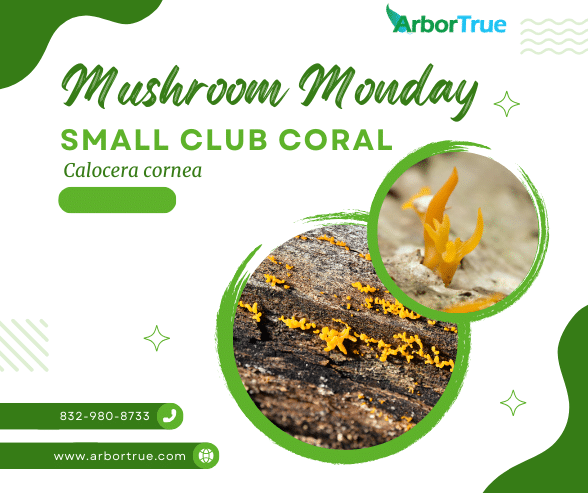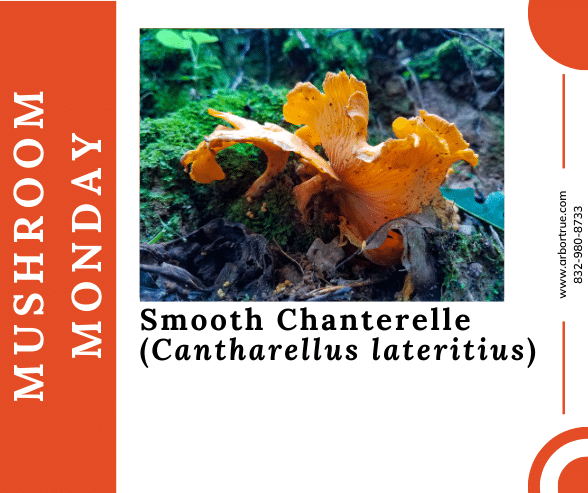
Orb Weaver Spiders
December 8, 2023
Benefits of Trees
December 13, 2023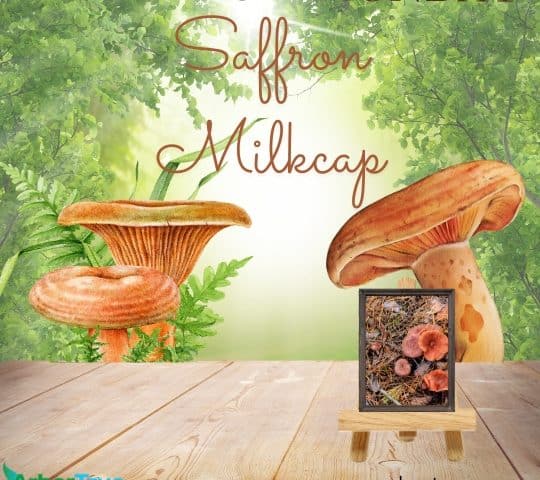
Mushroom Monday: Saffron Milkcaps
No, these aren’t reddish golden-colored caps worn by dairy workers. They’re in fact today’s Mushroom Monday mushroom!
One of the most interesting things about the saffron milkcap is the orange liquid called latex that comes out of it when the mushroom is cut. This liquid, which can appear milky, along with the color of the mushroom, help explain its common name.
In terms of appearance, the cap of the saffron milkcap varies in color from beige to orange-pinkish, and can be sticky. The cap, which can range in size from about 2.3 to around 7.8 inches, has slight rings on it and the center looks pressed down. As the mushroom ages, parts of the cap can turn a greenish color. Their gills are orange in color (but can turn green if bruised) and there is a ring that is orange-colored inside the stem that can be seen if the stem is cut. The stem is at least partially hollow.
Saffron milkcaps are mycorrhizal mushrooms and can be found around pines and they grow around trees that are coniferous. They can sometimes be found around oaks as well. We’ve featured mycorrhizal mushrooms before such as the common earthball and the morel.
Saffron milkcaps can be found after the rain and they might be found in groups. They are in North America and can also be found in Europe and Australia.
Although saffron milkcaps have a somewhat distinctive appearance, there are at least two mushrooms that are lookalikes for them.
One is Lactarius deterrimus. They can be found in the same places as saffron milkcaps but their cap has a grayer color and the orange of their gills is not as bright.
Another look alike are Jack O’Lantern mushrooms. Jack O’Lanterns, unlike saffron milkcaps, are a parasitic mushroom. Jack O’Lanterns can be found growing in clusters and they aren’t safe to eat.
We hope you enjoyed learning about saffron milkcaps. Follow us on social media to keep up with our continuing Mushroom Monday mushrooms.

